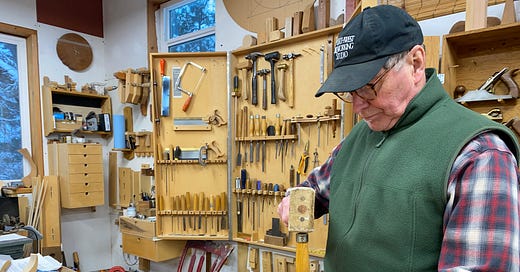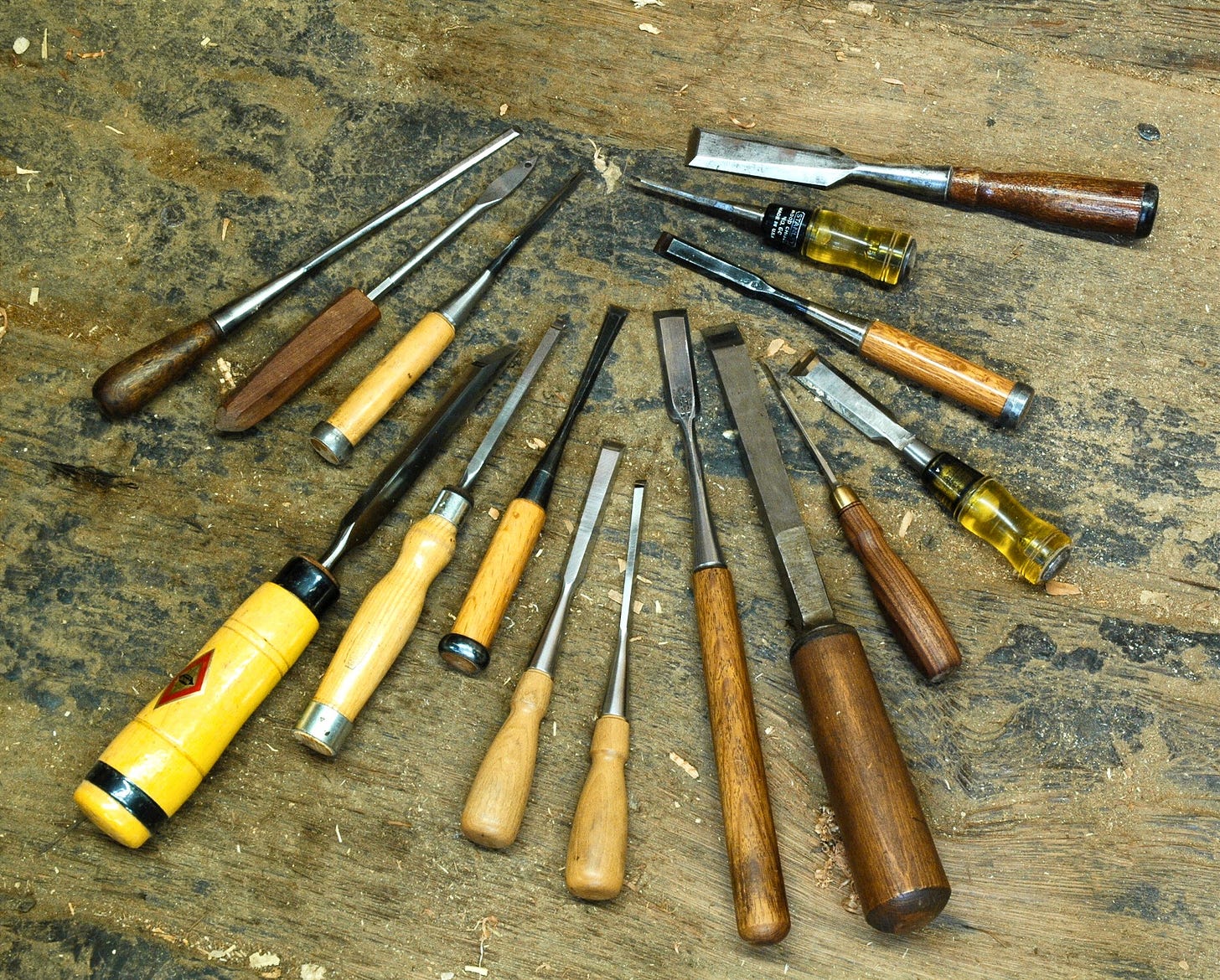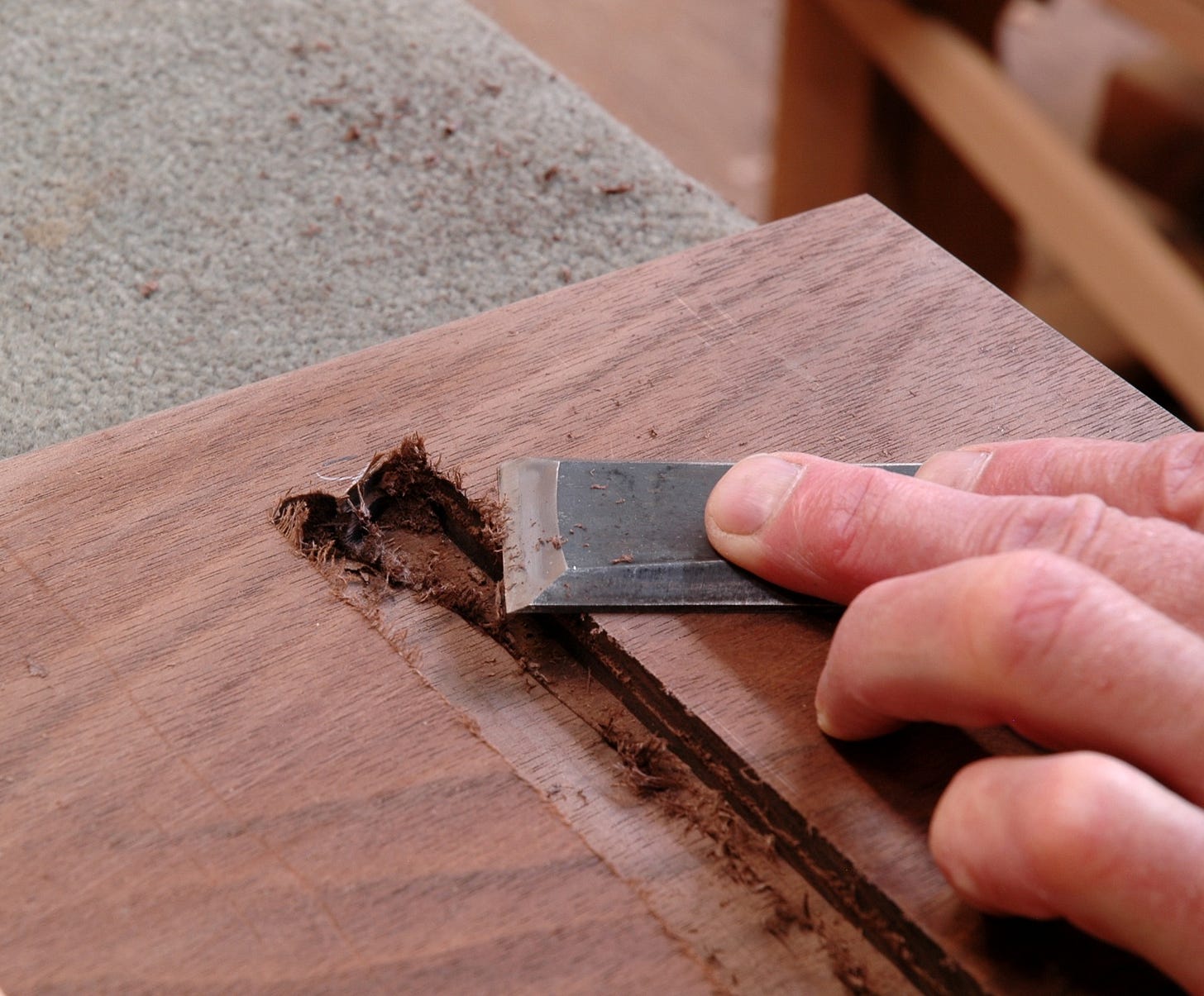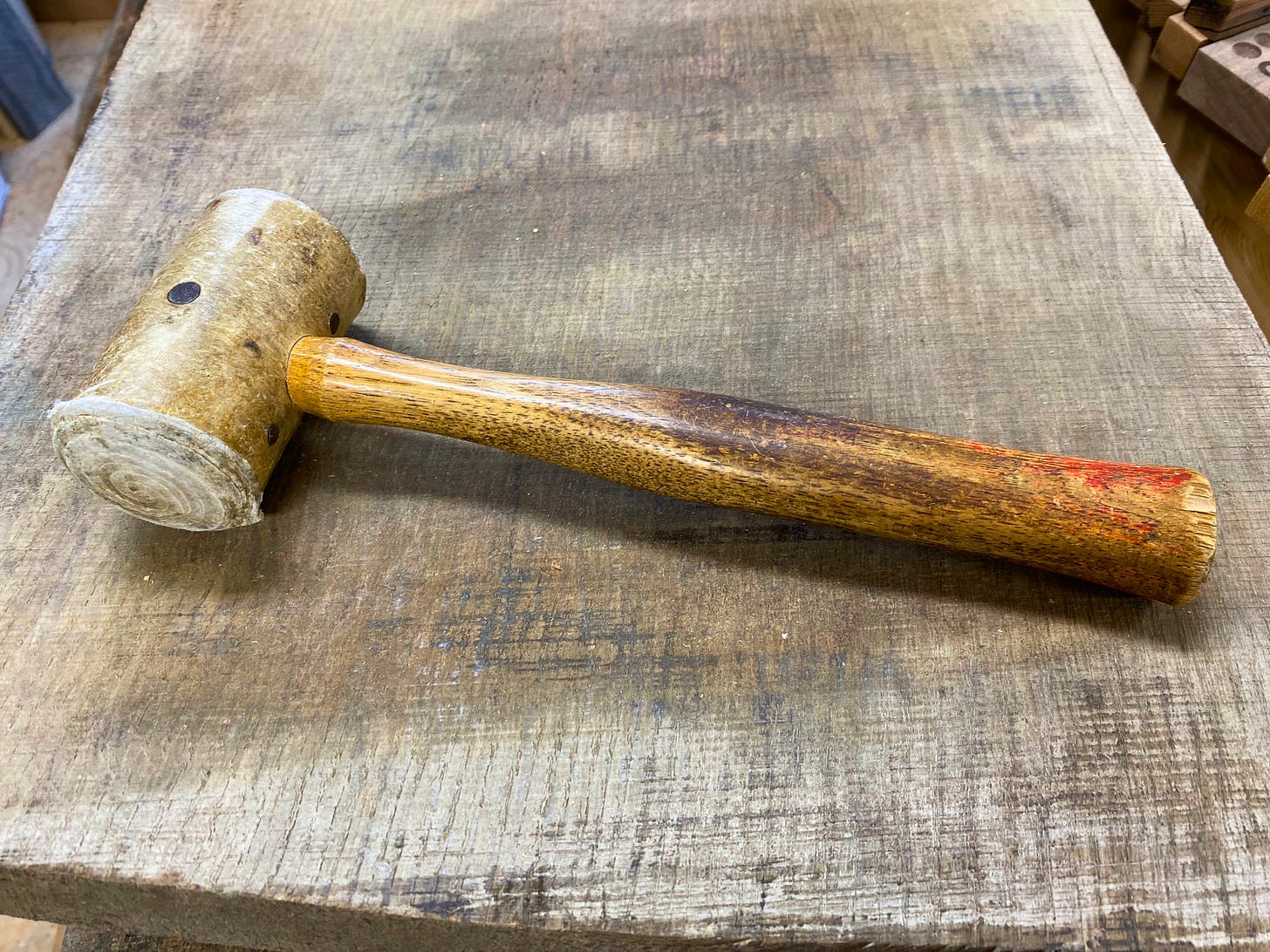A Chiseled Education
Master woodworker Gary Rogowski muses on the myriad uses and lessons of The Mighty Wedge.
A Chiseled Education
Story by
My understanding of the chisel, a common tool at my workbench, grew until I thought I knew everything about it. Then a revelation occurred that changed both my use of the tool and my sense of how I learned.
Consider the mighty wedge, one of the ancients’ most basic machines. Give me a wedge, and in its various forms I can split a rock, pare a curling twist of fragrant pine, or lock a door in place. Its power lies in its angled simplicity.
At the woodworker’s bench, examine the tooth of a crosscut saw or the teeth on a file or rasp, riffler, or float. They are all wedges. The grits of sand on a piece of sandpaper abrade because of their wedge shape. Adzes, axes, bent knives, carving gouges, drawknives, drill bits, froes, my awl, spokeshaves, the teeth of my table saw blades, plus every odd plane I own shows me a sharpened wedge designed for slicing, slivering, cutting, cleaving—basically, rending anything in two. The same goes for my basic bench chisel.
My chisels were some of my first hand tools. For decades I used these angled pieces of sharpened steel, but my approach with them was cautious. I knew their wedge shape could cause problems. My method was to stay behind their business end, of course, only taking tiny, measured cuts right on a line. I had learned from experience the result of pounding my chisel too hard into this mark. A too-solid whack of the mallet made the tool move off my line. Over time, my method became delicate and deliberate, which turned out to be laborious and slow.
Then I learned a new lesson. The wedging action of a sharp chisel, when cutting only a small amount of wood, always wins. It pushes away the waste material and never jumps past its line. I soon learned, if I have a pattern, edge, or some other shape to cut to, to stay at first 1/4” or more away from its final outline. As long as I kept away from the pattern, there was no danger of messing it up. I could then chop with gusto and cheer, removing all the waste wood as needed. Once I got within 1/32” of that line, the demand for exacting precision returned; but with most of the wood already removed, hitting the mark was easy. I set my tool on the line and chopped off what little waste wood remained. Simplicity itself.
Armed with this knowledge, my life at the bench changed. Suddenly I understood things in a different light. This wasn’t just a chopping tool that I had to coax into helping me. It was the Mighty Wedge in action. Used to its best advantage, it changed my world. With this realization, I felt both smart and stupid. Yet this, too, was a good lesson. Stay humble. Stay curious. There is still much to learn.
ICYMI…
“My Father’s Mallet”
by
A master woodworker, furniture maker, author, podcaster, and teacher offers an "object lesson" from his earliest days of learning the craft.
“Alissa Allen’s Mycopigments Create a ‘Palette of Place’”
by
A Pacific Northwest textile artist and naturalist uncovers nature’s hidden hues, creating stunning natural dyes from fungi and lichens foraged near her home.
Craftsmanship Magazine focuses on master artisans and innovators whose work informs our quest: to create a world built to last. In addition to our Substack offerings, you’ll find a rich archive of stories, podcasts, photo essays, and documentary shorts on our website—along with community resources like our Artisans’ Directory, our guide to U.S.-based craft & folk schools, and much more.











